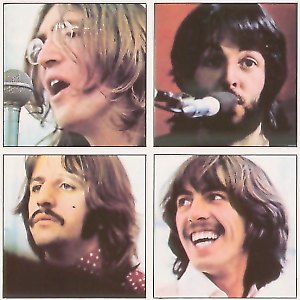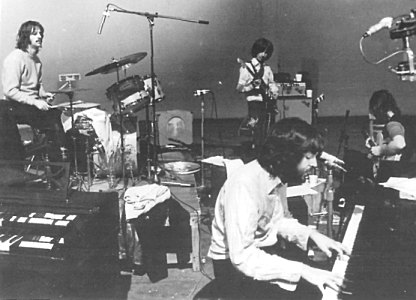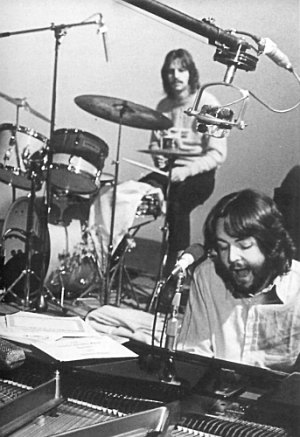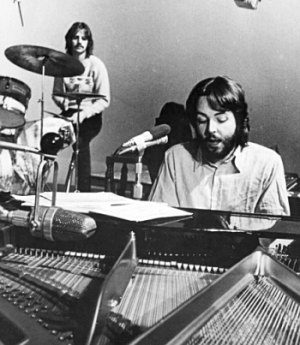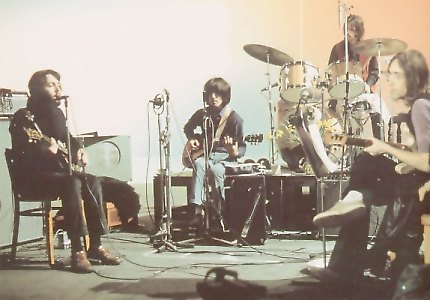 |
|
The most digestible of the Twickenham material was included in the Let
It Be film; much of the remainder was just too awful to be screened,
showing the Beatles jamming more than one hundred songs, sometimes just
a line sometimes an entire number, dire performances which were mostly
out of tune and time and rarely played with any conviction.
It ranged from children's
nursery rhymes (Baa Baa Black Sheep) to
rock standards (All Shook Up), to Beatles
oldies (Help!) to future solo titles
(All
Things Must Pass, Back Seat Of My Car,
Child Of Nature [Jealous
Guy], Every
Night, Give Me Some Truth,
Maybe I'm Amazed, That Would Be Something),
to made-up-on-the-spot tunes which, because of the film, had to be
copyrighted (Suzy Parker, ascribed to
Lennon - Starkey - Harrison - McCartney, Paul
Piano Intro, Lennon - McCartney, and Jazz
Piano Song, McCartney-Starkey), to nonsense (Chopsticks)
and to childhood radio memories (When Irish Eyes
Are Smiling). As a two-week exercise in sheer sloppiness it was
a good job. |
Straight away, however, at Twickenham, the old hostilities
returned : Yoko encroaching upon the Beatles' line-up, Paul
"bossing" the group around and allegedly "preaching"
to George about his playing.
Clearly, it was sensible that
the Beatles should have got together soon to paper over, and perhaps
even seal, the cracks which had to
be doing so only 11 weeks after concluding the seemingly interminable
'White Album' sessions was asking for trouble. Those
wounds hadn't yet healed, now salt was being applied. What's more,
putting 30 songs onto The Beatles had fairly exhausted John, Paul and
George's cache of unrecorded compositions. They had a few but the onset
of a new project so soon forced some into the open before they could be
honed and polished as would
usually have been the case.
The TV show idea came to a
grinding halt in the Twickenham canteen at lunchtime on Friday 10
January. Having bickered, on film, with Paul, and - according to press
reports which followed - had a bitter argument with John, and having
finally relinquished any vestige of interest in the Beatles performing
an audience TV show, George walked quietly up to the others, said
"See you round the clubs" and left. No one tried to stop him
as he got into his car and drove to his home in Esher and then,
according to published reports, journeyed north to see his parents for a
few days.
|
